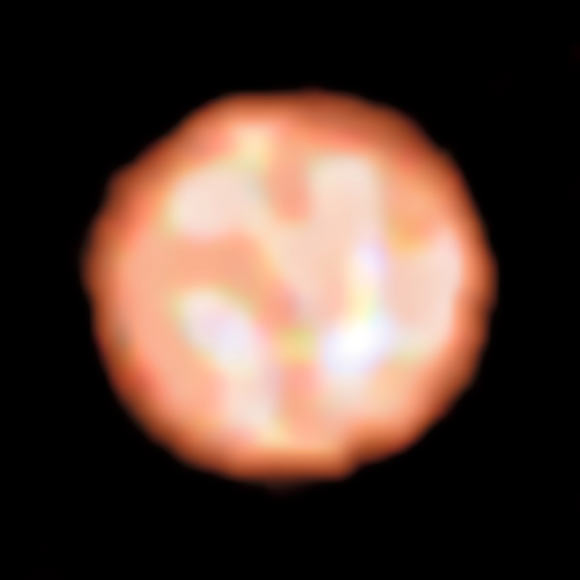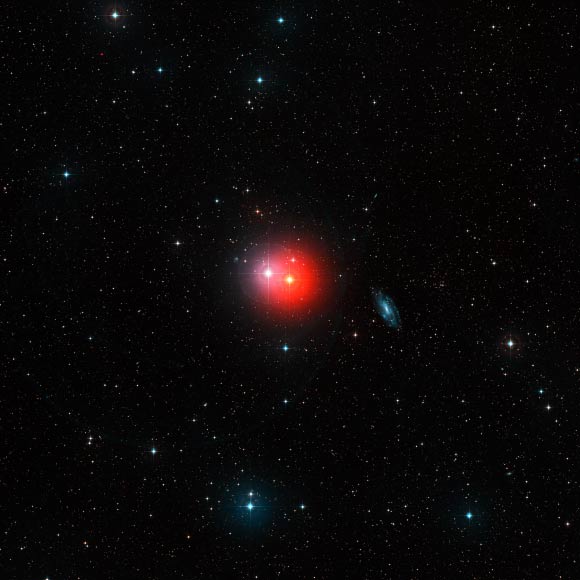An international team of scientists led by ESO astronomer Claudia Paladini has directly observed granules — patterns of convection currents in the plasma of a star — on the surface of a red giant star called π1 Gruis.

This remarkable image from ESO’s PIONIER instrument reveals convective cells that make up the surface of the giant star π1 Gruis. Image credit: ESO.
π1 Gruis is a cool red giant star of spectral type S5. It is located in the constellation of Grus, approximately 530 light-years from Earth.
Also known as HD 212087, HR 8521, and 161 Gruis, π1 Gruis has about the same mass as the Sun, but is 350 times larger and several thousand times as bright.
According to astronomers, our Sun will swell to become a similar red giant star in about 5 billion years.
Dr. Paladini and co-authors used the Precision Integrated-Optics Near-infrared Imaging ExpeRiment (PIONIER), an instrument on the Interferometer of ESO’s Very Large Telescope, to observe π1 Gruis in greater detail than ever before.
They found that the surface (photosphere) of this star has just a few granules, or convective cells, that are each about 75 million miles (120 million km) across — about a quarter of the star’s diameter. Just one of these granules would extend from the Sun to beyond Venus.
By comparison, the Sun’s photosphere contains about two million convective cells, with typical diameters of just 932 miles (1,500 km).
The vast size differences in the convective cells of these two stars can be explained in part by their varying surface gravities.
π1 Gruis is just 1.5 times the mass of the Sun but much larger, resulting in a much lower surface gravity and just a few, extremely large, granules.

This colorful image shows the sky around the bright pair of stars π1 Gruis (center-right, very red) and π2 Gruis (center-left, bluish-white). Just right of center the bright spiral galaxy IC 5201 is also visible and many other fainter galaxies are scattered across this wide-field image from the Digitized Sky Survey 2. Image credit: ESO / Digitized Sky Survey 2 / Davide De Martin.
While stars more massive than 8 solar masses end their lives in dramatic supernovae explosions, less massive stars like this one gradually expel their outer layers, resulting in beautiful planetary nebulae.
Previous studies of π1 Gruis found a shell of material 0.9 light-years away from the central star, thought to have been ejected around 20,000 years ago.
This relatively short period in a star’s life lasts just a few tens of thousands of years — compared to the overall lifetime of several billion — and these observations reveal a new method for probing this fleeting red giant phase.
The findings are published in the journal Nature.
_____
C. Paladini et al. Large granulation cells on the surface of the giant star π1 Gruis. Nature, published online December 20, 2017; doi: 10.1038/nature25001







